The Metals Building was comprised of companies involved in the manufacture of metal and metal products.
Exhibitors included: American Chain & Cable Company, Boart Products, Bethlehem Steel Company, Copper & Brass Research Associations, Englehard Industries, Link-Belt Company, National Standard Company, Otis Elevator Company, Ozalid Corp., John A. Roebling's Sons Company, Timken Roller Bearing Company, and The Yale & Towne Manufacturing Company.
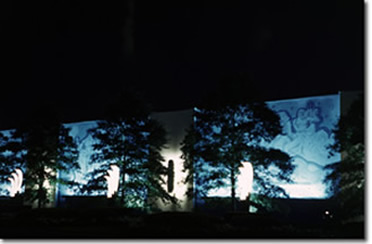
Historical Society - wf-374r
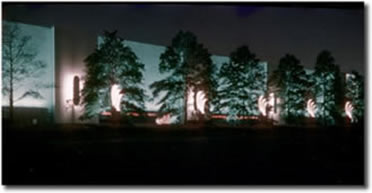
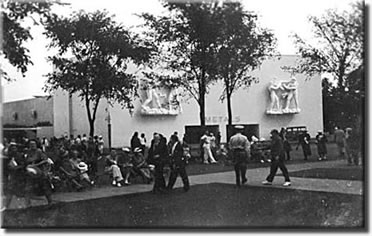
by Arie van Dort
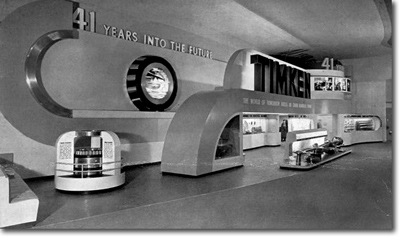
Courtesy of Shirley Manning
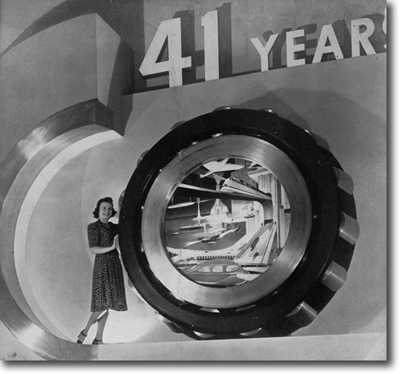
Courtesy of Shirley Manning.
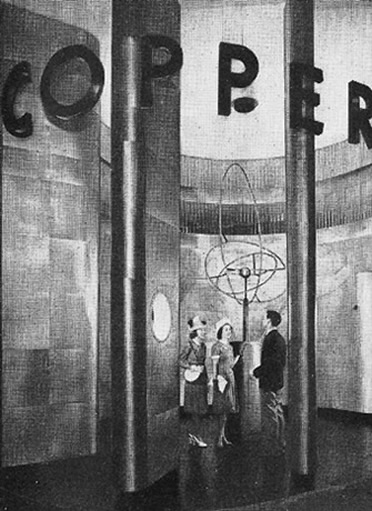
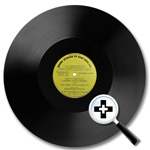
Transcription Recording from the Copper Atom Exhibit
Record donated by Carol Damiani, Restored recording by Richard Miller.
Both sides of this 33 1/3 recording contained multiple-duplicate narration and music for the Copper Atom Exhibit in the Hall of Metals.
A guess is that this recording was played repeatedly while visitors stopped at the model of the copper atom on display. The music section afforded one group to leave and another to arrive before the narration portion began.
Listen to the complete recording (music and narration)
Listen to only the narration portion of the recording.
Text from the Transcription Recording from the Copper Atom Exhibit
Ladies and gentleman, you are looking at a greatly enlarged model of the copper atom
An atom as you know is one of the smallest possible divisions of any material. It is so small, you cannot see it with your eyes, you cannot even see it through a microscope. This model here is enlarged more than 20-billion times.
An atom not only has a center, such as we represent by shinning copper ball but also has small particles, some of which circle around the center, all in their own regular paths. These small particles are called electrons and protons. they're charged with electricity. The electrons have negative charges, the protons have positive charges and they're all in the center nucleus. Notice that many of the electrons move in regular orbits around the center of the atom. Some orbits contain 17 electrons, some only two. Some travel close to the center, some swing out in bigger paths much like the sun and its planets. But the number of electrons and the shape and size of the orbits they travel and the number of protons in the center nucleus, all these make the copper atom different from a gold atom, an iron atom or any other kind of atom just as copper is different from any other kind of metal.
Copper is a good conductor of electricity and heat. Copper is easily worked. Copper will not rust and will resist corrosion. Copper, man's most useful metal, old as time, modern as tomorrow.
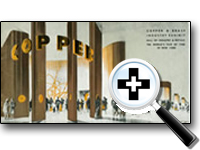
Courtesy of Cathy Scibelli
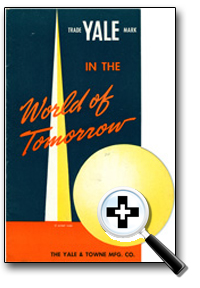
Courtesy of Bob Catania
- Return to:
- Production & Distribution
